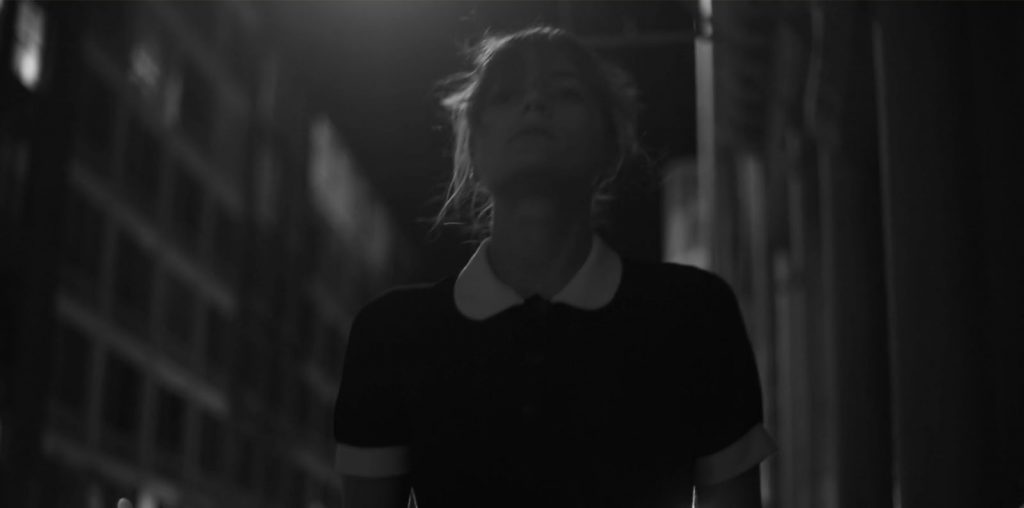
Life is rough for 15-year-old Echo (Kai Lanette), who shortly after we meet her is gang-raped in a vacant lot. She meanders around the lot for a while, goes home with a pregnancy test kit, gets busted by her dad and is asked to leave. Homeless, she becomes a prostitute, sleeping on an abandoned sofa in a different vacant lot, and wandering the streets and coastline. She strums a guitar that she totes around with her washes up in public restrooms and lives on junk food. And she doesn’t really do much else.
We see a lot of short, disjointed shots of her wandering through drainage ditches, passing derelict buildings, pushing an abandoned shopping cart as background music, including an ethereal slide guitar and a wistful balladeer, help set the mood. And there is a lot of moods, and just occasional dialog between Echo and a few others, but mostly it’s her alone. She’s marking time, it seems, and so are we. The long stretches of the lonesome girl wandering around railroad tracks, crashing under a bridge near the ocean, crawling around on abandoned rail cars begin to feel a bit tedious after the first 20 of this film’s 70 minutes.

“…becomes a prostitute, sleeping on an abandoned sofa in a different vacant lot, and wandering the streets and coastline…”
The director, Shane Ryan, is going for an aesthetic that finds poetry in broken neon signs, rusted junk cars, and weathered storefronts. The camerawork is jittery, almost to the point of inducing motion sickness, and possibly that’s what we’re meant to experience. After Echo is attacked we feel her disorientation and nausea. There’s little else to know about her, at least from the film’s perspective. We aren’t privy to the events that led to the attack, and the rest of her life seems to be a closed book as well, except that her father isn’t likely to win any parent of the year awards.
In the second half of the film, once she’s entered her prostitute phase, there’s a good deal of gratuitous nudity. It has little to do with her street hustling activities and isn’t really called for in the story. Scenes of her showering and taking sponge baths seem to be included just for voyeuristic thrills — an odd choice in a film about the victim of a such a violent crime.

“…camerawork is jittery, almost to the point of inducing motion sickness…”
Instead, it would have been good to see a bit more character development and revealing interactions between Echo and others. She has a short conversation with a plainclothes police officer and an unpleasant encounter with a friend’s sister who reluctantly puts her up for the night. But those all-too-brief incidents of human contact don’t bring us much closer to understanding the girl who, if not missing is certainly lost.
With its swooning musical soundtrack, frequent use of video effects and sudden switches from color to black and white, it’s hard not to compare parts of the film to music videos. It’s good to look at but only takes us so far. Without some of the longer, meandering passages, the story as it’s presented could have been told in probably a quarter of the screen time. While we do get a sense of the isolation and boredom that the character experiences, that’s not necessarily a concept that can sustain more than an hour of viewing time.

The Girl Who Wasn’t Missing (2011) Directed by Shane Ryan. Written by Kai Lanette, Shane Ryan. Starring Rob Dale, Jerell Gray, Alyssa Hedrick, Kai Lanette, Jeremy Williams. The Girl Who Wasn’t Missing screened at the Romford Film Festival’s Shane Ryan Retrospective.
4.5 out of 10

